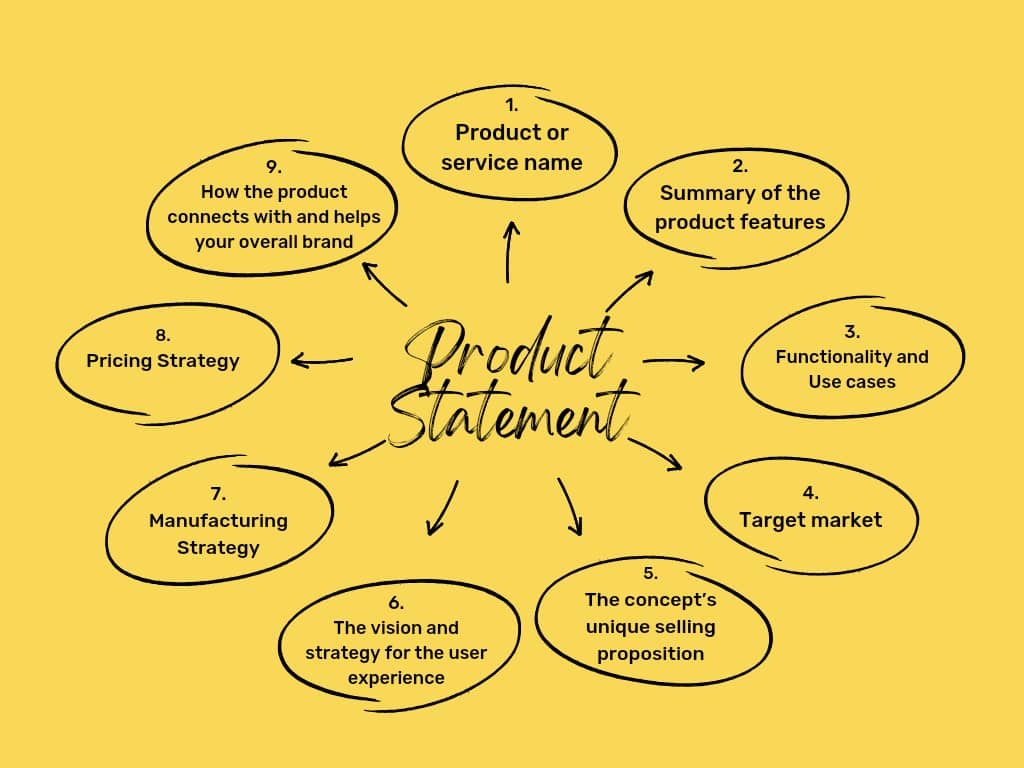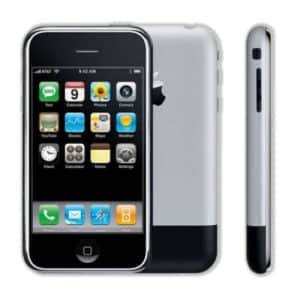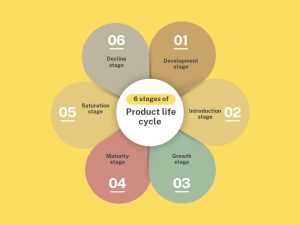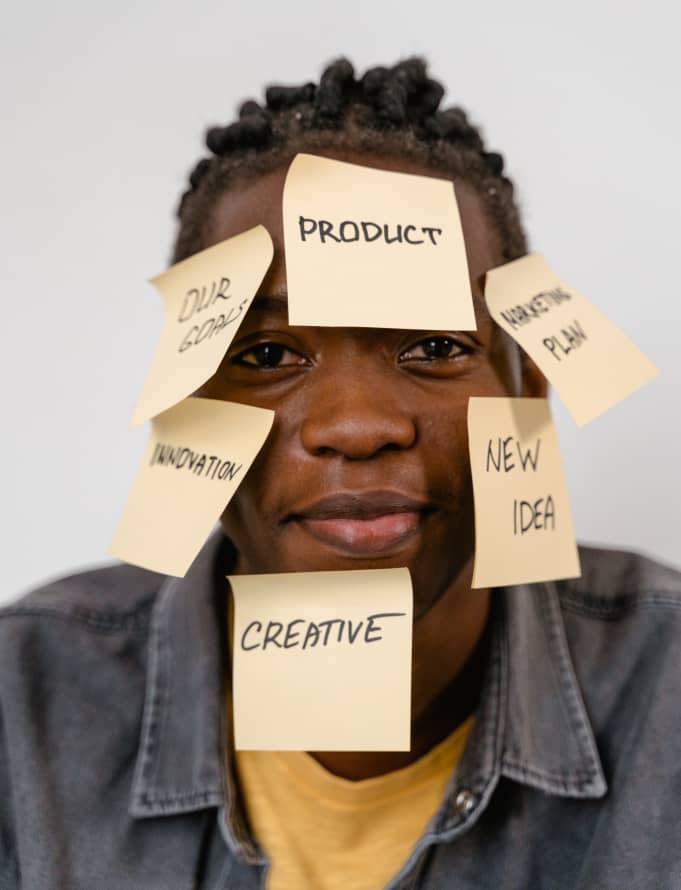Have you ever been in a situation where you’ve got this amazing new idea buzzing in your mind—that light bulb moment that makes you go, “Aha!?” This makes you so eager to launch and get people to buy into it.
Of course, if you’re someone with an entrepreneurial spirit, dreaming up a product, building it, and selling it to customers is thrilling. But, considering the reality of budgeting, product testing, and manufacturing, it can’t happen overnight.
In other words, there is a whole process to making this happen, from product concept to the period your product is first released to the public and when it’s removed from the market.
In this article, you’ll find out how to get your idea running, what a product concept is, and the process of developing your product concept in a product life cycle as a Nigerian entrepreneur.
Table of Contents
What is a Product Concept?
A product concept, also called a concept statement, is a detailed description or vision of a product or service you wish to develop. It’s part of the initial phase of the life cycle of product development, when business owners or entrepreneurs think about new products for their intended target audiences.
Simply put, a product concept is the blueprint of your idea. It’s the first glimpse into what your new product could be.
How to Develop a Product Concept
- Identify your target market
- Conduct product research on similar products
- Identify your product’s unique selling proposition
- Create a manufacturing plan
- Estimate your pricing
- Create a marketing plan
Before any kind of product design or engineering work is done, the product concept is first developed. A variety of factors to help bring the concept to life, such as cost, product-market fit, customer experience, market research, and product features are considered.
The product concept statement is the final part of the product concept, which clearly states the product strategy, vision, purpose, and how it will benefit both the customers and the business.
What Does a Product Concept Statement Consist of?
A product concept statement consists of these key elements that make up a strong product concept:
- Product or service name
- Summary of the product features
- Functionality and use cases
- Target market
- The concept’s unique selling proposition
- The vision and strategy for the user experience
- Manufacturing strategy
- Pricing strategy
- How the product connects with and helps your overall brand

Product concept statement
Read also: A Free Guide to Successful Product Marketing For Nigerian Businesses.
Types of Product Concepts
There are 2 types of product concepts that may have an impact on the scope and nature of your product concept statement. They are;
-
Original product concept
This concept focuses on new innovative attributes and features of a product that is the first of its kind or notably different and unique from the existing ones. The primary goals of the original product concept are to satisfy the basic needs of customers and add value through the product’s features.
A practical example will be the iPhone’s original concept, which centers on core functions. In 2007, the first iPhone was legendary because it allowed users to operate the device with their fingers. It debuted with a single home button at the front and did away with the physical keypad. Additionally, the iPhone introduced the idea of apps for smartphones.

First iPhone
-
Augmented product concept
The augmented concept builds upon your original product concept. This may include additional features and attributes that enhance the overall product offering. Beyond basic functions, augmented products offer more value, convenience, or unique experiences to their users.
Still using the iPhone as an instance—the iPhone 15 Pro and ProMax are the lightest Pro models ever. With features like curved edges and a customisable action button, powerful camera enhancements, and the addition of Roadside Assistance via satellite, which allows the iPhone to link you to help if you have car trouble while off the grid.
In augmented concept, product concept marketing is as important as improvement.

iPhone 15
What is Product Concept Marketing?
Product concept marketing is the idea that consumers will prefer products that offer the most quality, performance, or innovative features. In order to meet or exceed customer expectations, this idea places a strong demand on ongoing product innovation and improvement to keep customers interested.
However, a product concept marketing strategy may not be successful if the product definition market is not considered.
Read also: How to Create a High Performance Landing Page for Your Product
What is a Product Definition Market?
A product definition market refers to a clear and extensive description of a specific product or service offered by a company. It encompasses the features, benefits, and value proposition of the product.
So, product definition is an essential part of marketing strategy, helping businesses communicate clearly and effectively with their target audience, differentiate their offerings, and product positioning in the market. It also lays out what the product is, what problems it solves, and why consumers should choose it over existing alternatives.
In developing the product concept for the iPhone 15 series, the product definition highlights not only the sleek design and advanced technology but also the upgraded and user-friendly features, as well as how it caters to the specific needs and preferences of their target customers. So, Apple marketed in line with their product definition.
How long can your product stay in the market until it is removed from the shelves?
This brings us to the life cycle of your product.
What is a Product Life Cycle?
A product lifecycle is the journey a product takes from its introduction to the market, through its growth and increase in popularity, and finally to a decline in customer demand. It’s like the phases of a product’s life -from being an exciting newly released to well-known and finally less desired product.
The product life cycle consists of 6 stages:
- Development
- Introduction
- Growth
- Maturity
- Saturation
- Decline
-
Development stage
Before the product is released into the market, research and preparation are done throughout the development stage of the product life cycle. At this stage, companies develop prototypes, carry out tests on their effectiveness, and prepare to launch.
It’s also an expensive phase without revenue, and this duration varies based on product complexity, how new the product is, and level of competition. Knowing that new products have their struggles, before full production, it is advised that you test in a limited market. Gather feedback and make necessary adjustments before launching into a larger market.
-
Introduction stage
At the introduction stage, marketing teams first launch the new product, emphasizing building awareness and targeting potential customers. This phase includes developing a compelling product concept in marketing, highlighting its unique features and benefits.
Also, the marketing team employs advertising, campaigns, and distribution channel testing to establish product and brand awareness. Even though sales are initially low, this critical stage gives an opportunity to shape the product’s identity through a comprehensive product definition in the market.
Success in this phase means capturing the attention and commitment of first customers, whose positive experiences and feedback contribute to wider market adoption.
-
Growth stage
During the growth stage, the product increases in popularity, acceptance, demand, and profits. This growth is crucial for business sustainability and funding development. Scaling product success will bring cost benefits and optimized distribution. However, challenges may come with increased competition as others will try to replicate your success (product concept).
-
Maturity stage
The maturity stage is when sales become stable after rapid growth. Here, companies cut prices to stay competitive, streamline production, negotiate favorable contracts, and improve distribution. This phase prioritizes efficiency, learning from previous stages, and upgrading product features.
So, when production costs fall and sales rise, marketing switches from raising awareness to focusing on profit and standing out better than competitors.
Read also: How to Become a Product Manager in Nigeria
-
Saturation stage
During product saturation stage, many consumers are already using the product, but competition is fierce. So, to avoid decline in demand and sales, focus on making your product the go-to option by providing excellent service and building strong customer relationships.
Now, you have to be innovative to survive in a saturated market. Invest in research and development to improve and add new features. Making sure your product stays relevant while preventing it from going out of style and keeping market share.
-
Decline stage
Sadly, in the product decline stage, sales drop drastically due to increased competition or the product becoming outdated. But that’s not the end of the road. Companies facing this often decide to sell the business, discontinue the product, or innovate in order to remain relevant.

Product life cycle
Join our WhatsApp community to connect and network with professionals in different fields who will be of help to you.
How to Develop a Product Concept in a Product Life Cycle
When you have a product idea, developing your product concept within the product life cycle requires a strategic and creative process. Here’s how to go about it;
- Begin by conducting in-depth research and analyzing your competitors to understand market dynamics.
- Next, clearly define the idea by using prototypes and other visual representations.
- Release the first prototype to a random selection of your target market, then conduct market research and gather customer feedback for adjustments. This is because prototyping, testing, and continuous iteration ensure your concept aligns with customer needs.
- Before launch, implement strategic planning that includes market positioning, a clear product definition, a strong product concept of marketing, and a solid marketing plan.
- After launch, pay attention to the ongoing feedback on your product and improve it.
- Establish a definite plan to scale your product’s growth and success.
- Finally, keep your product current and flexible in the market to stay relevant.
You should align your product concept with the product life cycle to ensure your product remains relevant and impactful throughout the entire journey.
Conclusion
Having a product idea is not enough. For you to successfully put your product on the market and make profit, you need to lay out a clear strategy for your product development. Also, it is important to align your product concept throughout its lifecycle.
Finally, by understanding the nitty gritty of each stage and implementing effective strategies to follow through, you can position your product for long-term success in a competitive market.
Would you love to read more insightful articles on Entrepreneurship, Career, Lifestyle, Tech, etc? If yes, subscribe to our newsletter.
Edited by Oluwanifemi Akintomide.
About Author
-
I'm a Copywriter and Content Strategist with about 3 years of experience. Blending creativity with research, my skills are a tool to make your content engaging and relatable to your target audience, inspiring them to love you even more.
So, let's make your brand stand out together!
Latest entries
 CareerApril 15, 2024The Importance of Emotional Intelligence in Nigerian Workplaces
CareerApril 15, 2024The Importance of Emotional Intelligence in Nigerian Workplaces
 FreelancingFebruary 12, 2024Tips for Managing Time Zone Differences as a Freelancer in Nigeria
FreelancingFebruary 12, 2024Tips for Managing Time Zone Differences as a Freelancer in Nigeria TechnologyJanuary 24, 2024What is Database Security? Here’s All You Need to Know
TechnologyJanuary 24, 2024What is Database Security? Here’s All You Need to Know

